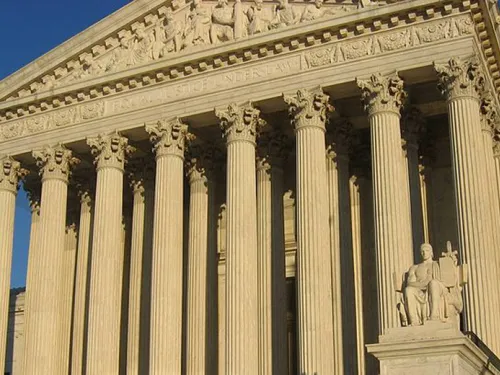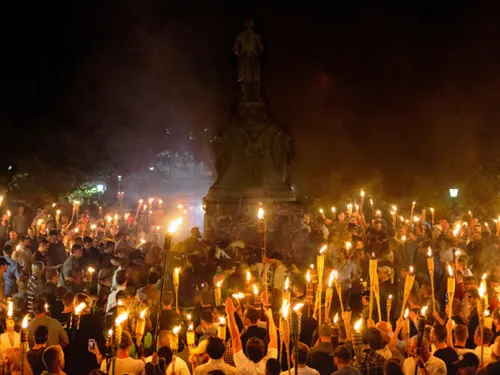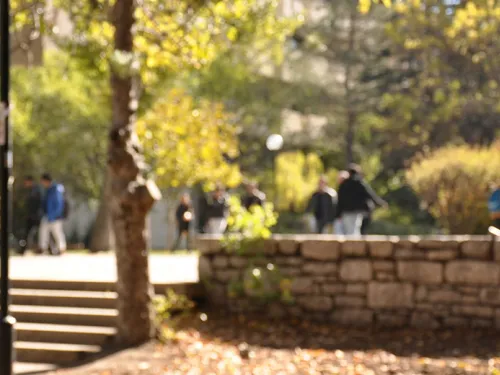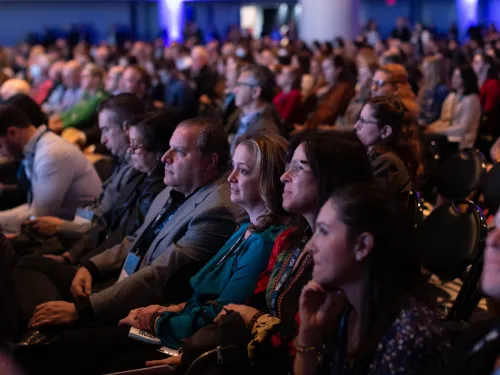By Carole Nuriel and Aykan Erdemir
An examination of textbooks used in the fourth, fifth, and sixth grades of Moroccan state schools during the 2021-2022 school year indicate that tolerance and diversity are core to the curriculum promoted across Moroccan society. The excerpts on Judaism and Jews that Morocco’s Ministry of National Education and Vocational Training provided to ADL (the Anti-Defamation League) show that the country’s elementary school textbooks depict Jews as an integral part of Moroccan society whose heritage and societal contributions are national assets. This poses a contrast to textbooks in other countries in the Middle East and North Africa, where Jews are routinely demonized and positive descriptions of Jews are scarce.
The Moroccan textbooks attempt to familiarize students with Judaism, including Moroccan-Jewish music, cuisine, and holidays, and the positive nature of neighborly relations between Jews and Muslims. It highlights how Jews integrated into Moroccan society, and their various contributions to the economy, in fields such as business, science, journalism and in popular culture. Stories of nostalgia about Jewish life in the country, and the sense of security enjoyed by Jews, are also featured.
The philosemitism expressed in the textbooks is a reflection of the centuries-long existence of Jews in Morocco, the relative security and comforts the Jewish community have enjoyed over the years, as well as the Kingdom’s principled stance against any form of discrimination and religious fanaticism, including that which could lead to violence.
Morocco has already committed to integrate Holocaust studies into the curriculum as of 2018 and these textbooks show that Rabat is ready to take the next step by adding not only the Holocaust to the curriculum at higher grade levels but also material about antisemitism and contemporary Jewish life around the world.
The following are translated excerpts from Moroccan textbooks.
Familiarizing the readers with Jewish heritage and religion.
Moroccan Jewish music
In their songs, Jews worldwide employed the musical melodies of the countries they live in and invented musical writings that helped read the Torah correctly in a group setting.
However, these musical writings did not develop further because Judaism prohibits playing musical instruments during the sabbath (Saturday prayers) and holidays. But the Europeans were able to develop these writings, and they became the musical symbols.
Moroccan Jewish music originated from the recitation of the Torah in synagogues that were spread across the country. After utilizing Arabic Andalusian melodies, this music became more appealing to and influential on Jewish and Muslim listeners.
Some of the ancient Moroccan Jewish melodies are characterized by sad tunes, as if they were crying over the exile from the land of Andalusia, from which Jews and Muslims were expelled together and settled in some Moroccan cities.
The Atlantic Andalusia Festival, organized annually in Essaouira, is still a model of the artistic coexistence between Jewish and Arabic music, an expression of a musical marriage in which Jews and Muslims sing
My facial expressions informed my mother that I did not know a thing about Maimouna. She continued: “Maimouna is a traditional Moroccan Jewish celebration. It begins after Passover. Moroccan Jews keep their doors open for family, neighbors, and friends to welcome them and to receive their congratulations. With their guests, Jews eat traditional cakes, pies, and the delicious dish of “Tharid.” And, of course, as the rhythms of Andalusian music and Moroccan songs play in the background, everyone enjoys their mint tea.
It was a custom for Moroccan Muslims to visit their Jewish friends and neighbors and offer them the holiday’s greetings. Moroccan Muslims would also give their Jewish friends bread, fish, yeast, honey, and milk because Jews were accustomed to not bringing these foodstuffs into their homes on Passover.
The Maimouna celebration first appeared in the Jewish community of Morocco. Still, this celebration has become more widespread in recent decades, held by Moroccan Jews wherever they are.
Hosted by Sami
Our Jewish friend Sami lives in our neighborhood. We play together, visit one another on occasions, and congratulate each other during religious holidays, whether Islamic or Jewish.
A few days ago, Sami invited us to his house for a delicious meal on Saturday. My friends Idris and Ibrahim and I accepted the invitation. Sami’s father welcomed us, and his mother served us a mouthwatering dish that we had never tasted before.
I asked Sami about the name of this dish and its ingredients; he answered: “This is the Sakhina dish. It is one of the most famous Moroccan Jewish dishes. Jews have always been preparing it on occasions and holidays. They mastered preparing it and passed it on from one generation to another to prevent this Moroccan dish from becoming extinct. The Sakhina is a Saturday meal for Moroccan Jews, and it derives its name from its ability to withhold heat for a long time. Moroccan Jews have come to prepare it in their homes using chickpeas, potatoes, meat, rice, some dates and coriander, as well as oil, salt and garlic. These ingredients are placed in earthenware pots and are sent on Friday evenings to the public oven, cooked in underground pits, to keep them hot for a long time. These pots stay there until Saturday because Jews do not light fire on Saturdays.
Before leaving Sami’s house, Idris thanked Sami on our behalf for his hospitality, and Ibrahim invited us to his house the following Friday for another delicious meal from our Moroccan cuisine.
Surrounded by high fences, making what resembles reeds, The Mellah is a Moroccan architectural design, which Jews inhabited within the ancient Moroccan cities. Later on, the word came to describe any Jewish community residence, even in villages and suburbs. Within this space, Jews practiced Judaism, celebrated and observed their holidays. The Mellah was filled with various markets and social facilities, such as the temples, schools, and other establishments necessary for Jewish life.
To this day, the Mellah is still considered a part of the Moroccan heritage and memory.
My name is David Ben Haim, a Moroccan Jew.
Acknowledging that Moroccan Jews are also loyal Moroccan patriots
Hachkar (Haškār), one of the leading documentarians on Moroccan Jewish culture, says, “I was born in the city of Tinghir and grew up in France, but I am Moroccan by origin and soul. I tried to return to my roots in the city of Tinghir to search for my Moroccan identity. I discovered the great presence of the Jewish component in the lives of my ancestors and their neighbors. Their stories are not without nostalgia for the images of coexistence and the good relationship that brought Jews and Muslims together in the region. Together in the same stores. This is how Moroccan Jews in the diaspora express their love and nostalgia for their homeland, Morocco, and their loyalty to the glorious Alawite throne.
Wafā’ cAmmārī – Paris – Sky News Arabic – October 2020. (Emphasis added)
“It is the Moroccan comedian Gad Elmaleh who has made millions of his fans laugh with his brilliant wit. He has fans from all over the world, especially in Morocco, Algeria, Tunisia, France, and Canada, etc. What do you know about him?
He is a Moroccan Jewish citizen to his core. He studied culture, art, and politics but mainly excelled in acting and comedy. Gad Elmaleh often performs alone on stage, but he makes the audience feel like the stage is full of other actors. He is a skilled pianist and a creative dancer. His fast and coordinated motions help him with bodily expressions that replace verbal ones in many situations. His facial features utter words that his tongue did not say.
Gad Elmaleh says that one of his ancestors migrated from the Tashmchit area in the Atlas Mountains to Casablanca city on foot and settled there, where Gad was born, lived, and studied before moving to France and Canada.
Gad stayed connected to Morocco, despite the distance. Why wouldn't he? After all, Morocco is his homeland and his place of birth. He loves it and is proud of this love. Just as proud as he is of the upbringing he received from his nanny, Mrs. Fatima, whom he considers his second mother.” (Emphasis added)
He [journalist and author Edmon Imran Al-Maleh] descends from a well-known Jewish family in Essaouira, a deeply rooted family in the east of Souss, near the Amazigh’s “Ait Ba’amran” tribe in the south of the Atlas. Edmon Imran Al-Maleh refused to emigrate and chose to stay. His roots adhered to the soil of this dear country. He traveled to Paris in 1965 to work as a philosophy teacher. He also worked as a journalist. He returned to settle in Rabat from 1999 until his death.
- Good! I will supply you with what you missed in your research... In 1980, Edmon Imran Al-Maleh started writing and composing. At sixty-three, he declared: “I am a university professor. I entered the world of writing by coincidence, and my starting point was to read and become familiar with French books, including the Le Monde newspaper.”
Although he wrote in French, Arabic remained present in his books that focused on human principles and the concept of justice and equality. He was also interested in the history of the Moroccan struggle for independence, the Moroccan cultural identity, the Moroccan mother tongue, and biography. Edmon enjoyed educating people about the Moroccan rituals, customs, coexistence, and religious tolerance. (Emphasis added)
Describing the integration of the Jewish community in various crafts
We cannot speak of the jewelry industry and trade in Morocco without mentioning the Moroccan Jewish jewelers. Their great skills and precision in crafts distinguished them, and it continues to be the case today.
This craft contributed to the emergence of creative people who excelled in engraving rings, earrings, and necklaces in the service of Moroccan women and contributed to strengthening the relationship between Muslim and Jewish goldsmiths. The craftsmen of the two religions trust in each other, and their grown-ups teach the young ones in order for Morocco to preserve this incredible art.
You wouldn’t be surprised to know that Moroccan Jews have always been part of the larger Moroccan community. And that in the past, together, they practiced professional crafts such as blacksmithing, shoemaking, horse saddlery, and clothmaking.
Besides this [living in cities and working as merchants], small groups of Moroccan Jews participated in farming and raising livestock, especially in southern Morocco. They worked there on small agricultural properties. However, their work in agriculture was rare compared to trade, perhaps because agriculture requires a great deal of effort or because it does not allow the Jew to devote himself to study even for an hour a day, whereas commerce affords more time to be devoted to study.
With these economic activities, Moroccan Jews had a strong presence in the countryside and cities. This facilitated their ability to live in peace, with their Muslim compatriots, with whom they shared common interests.
Ḥāyyim Zacafarānī, A Thousand Years of Moroccan Jewish History (i.1, 198 pp. 158-154 adapted) (Emphasis added)
Highlighting Jewish icons in Moroccan popular culture and science
“Another Moroccan scientist whose intelligence has emerged since his childhood, whose father was a mathematician, which led him to excel in Math, was Samuel al-Maghribi [i.e. “the Moroccan”]. He is descended from a Moroccan Jewish family which emigrated from the Draa region to the city of Fes. He was known for his unique methods of calculating trigonometry and tables. At the age of nineteen, he wrote the book The Brilliant in Algebra. As he continued to seek knowledge, he became a skilled doctor and a brilliant engineer.”
Celebrating diversity in Moroccan society, including Jewish-Muslim cooperation
The Moroccan Kingdom’s Constitution (2011): “The Kingdom of Morocco is committed to prohibiting and combating all forms of discrimination based on gender, color, belief, culture, social or regional affiliation, language, disability, or any personal situation whatsoever.”
Religious tolerance is deduced from the two texts. It is against fanaticism which leads to violence.
Secondly, history is evoked. The history of Morocco has known a distinct civilized model in the field of cohabitation and interaction of Arabs now with the people of other religions; especially, the Jews and Christians. The enlightened ethos in the history of these dwellings is what resulted with the flourishing of the Moroccan Andalusian civilization. The various sects performed specific rituals and had distinct social groups. They produced art and exchanged wisdom, philosophy, and science
While we were wandering around the ancient city between the narrow paths, sometimes entering a shop for handicrafts, and at other times visiting a museum of art, our attention was drawn to a house. It was designed in the form of arches typical of those found in the historical cities of our country. Above its gate was a plaque which read “House of Memory” in Arabic, Hebrew and French. We asked the guard standing at his post, about this place. He told us that it is a museum that collects Hebrew heritage artifacts in Morocco.
My father entered the House of Memory, and I accompanied him. An old man greeted us with a broad smile, and accompanied us on a tour through the museum. He told us at the outset that House of Memory collects antiques that reflect part of the Moroccan cultural heritage. He added: “Our civilization is characterized by the intermingling of several cultures, including Arab, Amazigh, Ḥasānī, Hebrew, African and Andalusian. The city of Essaouira (aṣ-Ṣawīra) is the best expression of this intermingling. Hence, Morocco established this museum in this city, to introduce the Hebrew heritage of the Moroccan Jews who lived in Morocco for centuries. Some (of the Moroccan Jews) were here with the Berbers since the fifth century BCE; alternatively, others came from Andalusia five centuries ago.”
Behind the Jewish Quarter (Mellaḥ) Walls
From the balcony of her house in the city of Casablanca, Suzanne Abīṭār, a Moroccan Jew, recalls the memories of her childhood when she lived in the Mellaḥ neighborhood of the old city. She remembers the dwellings and the shops, the alleys and the pathways. She recalls the features of the children who used to share entertaining and useful games with her. She smiles when she talks about the joy that overwhelmed her, as she received a piece of candy or chocolate from the father of one of her female-colleagues who had just returned from his workplace. Her eyes watered when she recalled the atmosphere of fun and play on a warm day, in the company of Muslim and Jewish children. She says proudly, “This feeling does not pertain to me alone. All the Jews who lived in Morocco shared the same feeling: a longing for the Mellaḥ, that safe place in which we used to live side by side with our Muslim brothers.”









